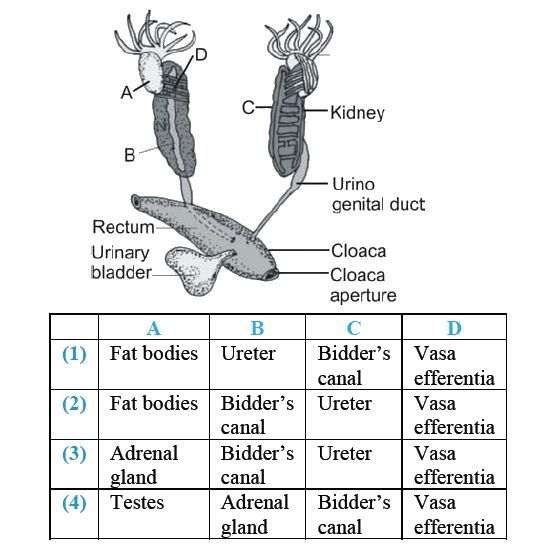Draw a neat diagram of digestive system of frog.
Step-by-Step Solution for Drawing the Digestive System of a Frog
1. Start with the Basic Outline: Begin by drawing the outline of the frog's body. This will help you place the digestive organs in the correct position.
2. Draw the Oesophagus: From the mouth, draw a tube leading downwards. This tube represents the oesophagus, which is the food pipe where food travels from the mouth to the stomach.
3. Add the Stomach: At the end of the oesophagus, draw a slightly larger, curved shape to represent the stomach. This is where the food is stored and begins to be digested.
4. Include the Liver: On the right side of the stomach, draw a large, lobed structure to represent the liver. The liver produces bile, which is important for digestion.
5. Draw the Gallbladder: Below the liver, draw a small pouch-like structure to represent the gallbladder, which stores bile produced by the liver.
6. Add the Pancreas: Below the stomach, draw a small, elongated structure to represent the pancreas. The pancreas produces digestive enzymes that aid in digestion.
7. Draw the Intestine: From the stomach, draw a long, coiled tube that represents the small intestine. This is where most of the digestion and absorption of nutrients occurs.
8. Include the Large Intestine: At the end of the small intestine, draw a wider tube that represents the large intestine. This is where water is absorbed and waste is prepared for excretion.
9. Draw the Rectum: At the end of the large intestine, draw a short tube leading to the cloacal aperture. This is the rectum, where waste is stored before being expelled.
10. Add the Cloacal Aperture: Finally, draw a small opening at the posterior end of the frog to represent the cloacal aperture. This is the common exit for the digestive, urinary, and reproductive tracts.
11. Label the Diagram: Clearly label each part of the digestive system: Mouth, Oesophagus, Stomach, Liver, Gallbladder, Pancreas, Small Intestine, Large Intestine, Rectum, and Cloacal Aperture.
Topper's Solved these Questions
Similar Questions
Draw a labelled diagram of the digestive system of humans :
View SolutionDraw a well labelled diagram of Digestive system of humans
View SolutionWhich statement is not true regarding the digestive system of frog?
View SolutionDraw a neat diagram for NaCl structure.
View SolutionA block and tackle system of pulleys has velocity ratio 4.
Draw a neat labelled diagram of the system indicating clearly the points of application and direction of load and effort.
View SolutionThe diagram given below shows the supportive connective tissue.

Draw neat diagrams of the three types of blood cells.
View SolutionDraw a neat diagram of a simple pendulum. Show on it the effective length of the pendulum and its one oscillation.
View SolutionFollowing is the diagram of the male reproductive system of frog. Select the correct set of names labelled A, B, C and D.

View SolutionWhat is an electroscope ? Draw a neat diagram of gold leaf electroscope .
View SolutionA pulley system has a velocity ratio 5. Draw a neat labelled diagram of the pulley system to lift a load by applying the effort in a convenient direction. Mark the tension in your diagram.
If the efficiency of the system is 80% find its mechanical advantage.
View Solution
